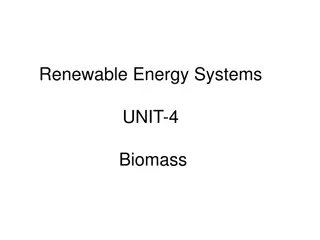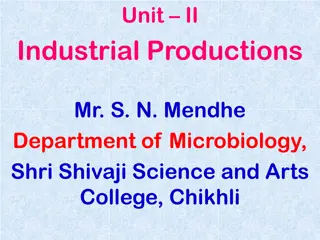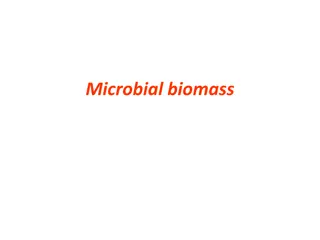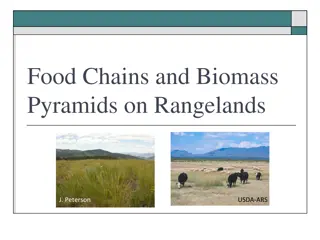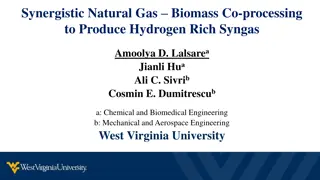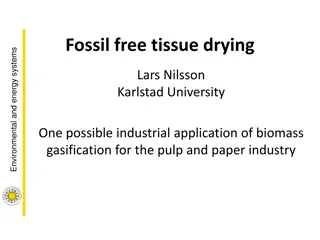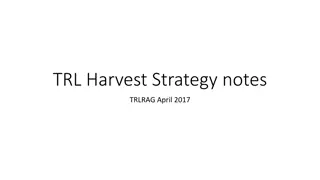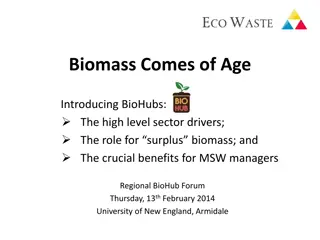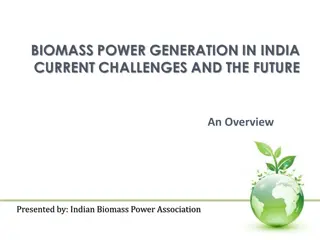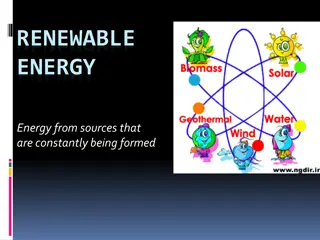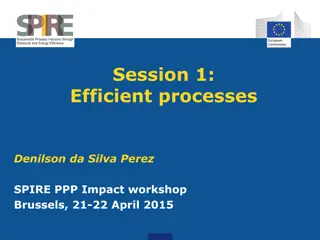Enhanced n-Butanol Production from Lignocellulosic Biomass Hydrolysates
Biofuels production from lignocellulosic biomass offers a promising solution to replace conventional substrates. This study focuses on enhancing n-butanol production using metabolically engineered Clostridium tyrobutyricum immobilized in a fibrous-bed bioreactor. By utilizing agricultural residues like cotton stalk, soybean hull, and sugarcane bagasse, this research demonstrates the feasibility and advantages of using abundant agricultural residues for n-butanol production. The engineered strain, Ct.ack-adhE2, shows high butanol tolerance and the ability to utilize both glucose and xylose simultaneously, making it superior for lignocellulosic biomass conversion. Fermentation kinetics in serum bottles and subsequent evaluation in a fibrous-bed bioreactor reveal promising results for stable long-term operation and improved substrate utilization efficiency. Techno-economic analysis further supports the viability of n-butanol production from lignocellulosic biomass.
Download Presentation

Please find below an Image/Link to download the presentation.
The content on the website is provided AS IS for your information and personal use only. It may not be sold, licensed, or shared on other websites without obtaining consent from the author.If you encounter any issues during the download, it is possible that the publisher has removed the file from their server.
You are allowed to download the files provided on this website for personal or commercial use, subject to the condition that they are used lawfully. All files are the property of their respective owners.
The content on the website is provided AS IS for your information and personal use only. It may not be sold, licensed, or shared on other websites without obtaining consent from the author.
E N D
Presentation Transcript
Enhanced n-butanol production from lignocellulosic biomass hydrolysates by metabolically engineered Clostridium tyrobutyricum immobilized in fibrous-bed bioreactor Hojae SHIM Department of Civil and Environmental Engineering, Faculty of Science and Technology, University of Macau, Taipa, Macau SAR, China The 2nd Jiangsu-Hong Kong-Macau Conference on Biomass Energy and Materials Nanjing, China. 29th-30th Oct. 2022 1
-Current n-butanol production by acetone-butanol-ethanol (ABE) fermentation with solventogenic clostridia is limited by high cost of conventional substrates, mainly sugar and starch. -Agricultural residues (corn stover, corn fiber, sugarcane bagasse, soybean hull, rice straw, and rice bran), industrial and municipal solid wastes, and wood pulp have thus been studied as low-cost feedstocks in ABE fermentation. -Although these residues are promising alternative feedstocks for biofuels production, they require expensive enzymatic hydrolysis and harsh thermal, physical, or chemical pretreatments, which generate compounds severely inhibiting cell growth and fermentation. -To improve fermentation performance, detoxification to remove inhibitors in hydrolysates is usually required, which adds costs and may not be effective. -In addition, ABE fermentation suffers from low butanol titer (<12 g/L), yield (~0.2 g/g), and productivity (~0.2 g/L h) because of high butanol cytotoxicity and coproduction of acetone. 2
-Butyrate-producing Clostridium tyrobutyricum with acetate kinase (ack) knockout was engineered to overexpress adhE2 encoding aldehyde/alcohol dehydrogenase for n-butanol production from sugar. -Metabolically engineered strain, Ct ack-adhE2, has several advantages, including no acetone generation and higher butanol tolerance and production. -Unlike native solventogenic clostridia, heterologous butanol biosynthesis pathway in Ct ack-adhE2 is not regulated nor associated with sporulation and autolysis. -Furthermore, C. tyrobutyricum can utilize both glucose and xylose present in lignocellulosic lignocellulosic biomass biomass hydrolysates. -Although potential of Ct ack-adhE2 for n-butanol production has been demonstrated with sugar and starch substrates, its application with lignocellulosic lignocellulosic biomass biomass has not been well studied. 3
OBJECTIVE - -To To evaluate evaluate feasibility butanol butanol production production from cotton cotton stalk, stalk, soybean and advantages advantages of of using from abundant abundant agricultural soybean hull, hull, and and sugarcane feasibility and Ct ack ack- -adhE residues (corn bagasse) using Ct adhE2 2 for (corn fiber, for n n- - fiber, agricultural residues sugarcane bagasse) -Fermentation kinetics was first studied in serum bottles with different biomass hydrolysates as carbon source. -Then, high-level n-butanol production from these low-cost agricultural residues was studied with cells immobilized in fibrous-bed bioreactor (FBB) to improve substrate utilization efficiency and to achieve stable long-term operation in repeated batch fermentation. -Compared to other solventogenic Clostridium species, such as C. acetobutylicum and C. beijerinckii, Ct ack-adhE2 with ability to use both glucose and xylose simultaneously and high tolerance to hydrolysate inhibitors is superior for n-butanol production from lignocellulosic lignocellulosic biomass biomass. -Techno-economic analysis showed n-butanol could be produced from lignocellulosic lignocellulosic biomass biomass at cost less than $2.5/gal for biofuel application. 4
MATERIALS AND METHODS Preparation Preparation of of lignocellulosic lignocellulosic biomass biomass hydrolysates hydrolysates -Pretreatment and hydrolysis of corn fiber (pellet), cotton stalk (powder), soybean hull (pellet), and sugarcane bagasse (powder) -Dried biomass at solid loading of 10% (w/v) in dilute acid (0.04 N HCl or 0.02 N H2SO4) was autoclaved in 1-L flask. -After cooling and adjusting solution pH to 5.0-5.5 with 10 N NaOH, commercial cellulase Accellerase 1500, which contained endoglucanase (activity: 2200-2800 CMC U/g) and -glucosidase (activity: 525-775 pNPG U/g), was added at 0.1 mL/g dry biomass to hydrolyze cellulose to glucose at 50oC for 72 h. -After removing insoluble solids, hydrolysate was concentrated to desirable sugar concentration of ~60 g/L by evaporation under vacuum at 60oC. 5
MATERIALS AND METHODS Bacterial Bacterial strain strain and and culture culture conditions conditions -C. tyrobutyricumCt ack-adhE2 overexpressing heterologous adhE2 was maintained in Reinforced Reinforced Clostridial Clostridial Medium Medium (RCM) thiamphenicol. -All fermentation studies were carried out at 37oC with biomass hydrolysate [corn corn fiber fiber hydrolysate hydrolysate (CFH), (CFH), cotton soybean soybean hull hull hydrolysate hydrolysate (SHH), (SHH), and and sugarcane (SBH) (SBH), respectively] containing ~60 g/L total sugar (mainly glucose and xylose), supplemented with 30 g/L corn (NH4)2SO4, 1.5 g/L K2HPO4, 0.6 g/L MgSO4 7H2O, 0.03 g/L FeSO4 7H2O, 0.5 g/L cysteine, and 30 g/mL thiamphenicol. -Artificial electron carrier, either methyl viologen (MV) or benzyl viologen (BV), was also added to increase butanol production in fermentation. (RCM) containing 30 g/mL cotton stalk sugarcane bagasse stalk hydrolysate hydrolysate (CSH), bagasse hydrolysate (CSH), hydrolysate corn steep steep liquor liquor (CSL) (CSL), 3 g/L 6
MATERIALS AND METHODS Free Free- -cell -Fermentation kinetics with CFH, CSH, SHH, or SBH as substrate was first studied in serum bottles. -After inoculation with 2.5 mL active cells prepared from overnight culture in RCM, cultures were incubated at 37oC with daily sampling and pH adjustment to ~6.5 by adding 10% (w/v) NaOH solution. -Samples were taken to monitor cell growth, and then stored in refrigerator until analyses for substrates (glucose and xylose) and metabolites (ethanol, butanol, acetic acid, and butyric acid). cell fermentation fermentation in in serum serum bottles bottles Immobilized Immobilized- -cell -Cells were immobilized/attached in FBB (glass column packed with spiral wound fibrous matrix; working volume, 400 mL) connected to stirred-tank reactor (1.5 L working volume) with pH controlled at 6.0 with saturated NH4OH solution and at 37oC. -FBB was operated in repeated-batch mode using CSH, CFH, SHH, and SBH, respectively, as substrates sequentially to evaluate fermentation efficiency and long-term performance. -Samples were taken periodically to analyze sugar (glucose and xylose) consumption and metabolites (butanol, ethanol, acetate, and butyrate) production. cell fermentation fermentation in in fibrous fibrous- -bed bed bioreactor bioreactor 7
ANALYTICAL METHODS -Cell density was measured as optical density (OD) at 600 nm with spectrophotometer. -Ethanol, butanol, acetic acid, and butyric acid were analyzed by gas chromatography (GC) whereas sugar (glucose, xylose, galactose, and arabinose) were analyzed by high performance liquid chromatography (HPLC). -Hydrolysate inhibitors (furfural, hydroxymethylfurfural, formic acid, ferulic acid, levulinic acid, and p-coumaric acid) were analyzed by HPLC with Rezex ROA-Organic Acid H+ column and UV detector at 280 nm. -Mobile phase was 0.0025 M H2SO4 at 0.6 mL/min with 15- L sample injection volume. 8
Compositions of lignocellulosic biomass hydrolysates used Cotton stalk Cotton stalk Sugarcane bagasse Sugarcane bagasse Soybean hull Soybean hull Corn fiber Corn fiber Sugar Sugar (g/L) (g/L) Glucose Glucose 44.4 3.2 32.5 0.1 58.0 2.9 53.7 2.9 Pentoses Pentoses 7.5 1.0 17.1 3.5 17.4 1.6 40.7 1.0 Yield Yield (g/g) (g/g) 0.35 0.03 0.33 0.02 0.50 0.03 0.63 0.03 Inhibitors Inhibitors (g/L) (g/L) Furfural Furfural <0.01 / 0 <0.01 / 0 0.01 / 0 0.01 / 0 HMF HMF 2.35 / 0 2.44 / 0 2.54 / 0 2.52 / 0 Formic Formic acid acid 1.49 0.07 2.22 0.22 2.52 0.31 2.51 / 6.88 Ferulic Ferulic acid acid <0.01 / 0.47 <0.01 / 0.66 <0.01 / 0.61 <0.01 / 1.41 Levulinic Levulinic acid acid <0.01 / 2.95 4.33 0.21 3.27 0.26 <0.01 / 9.44 p p- -Coumaric Coumaric acid acid 0.05 0.00 0.095 0.015 0.045 0.005 0.10 0.04 Hydrolysates were obtained after acid pretreatment, enzymatic hydrolysis, centrifugation to remove solid residues, evaporation for concentration (3 ), and autoclaving with CSL. Pentoses contained mainly xylose and small amount of arabinose. 9
Fermentation kinetics of Ctack-adhE2 grown in CSL medium in serum bottles using cotton stalk hydrolysate (CSH), sugarcane bagasse hydrolysate (SBH), soybean hull hydrolysate (SHH), or corn fiber hydrolysate (CFH) as substrate 60 20 60 20 CSH SBH 50 50 16 16 Glucose Ethanol Acetate OD Xylose Glucose and Xylose (g/L) Glucose and Xylose (g/L) Butanol Butyrate OD, Products (g/L) OD, Products (g/L) 40 40 12 12 30 30 Glucose Ethanol Acetate Xylose OD 8 8 Butanol Butyrate 20 20 4 4 10 10 0 0 0 0 0 20 40 60 Time (h) 80 100 120 0 20 40 60 Time (h) 80 100 120 60 20 60 SHH CFH 20 50 50 16 Glucose and Xylose (g/L) Glucose Ethanol Acetate Xylose OD Glucose and Xylose (g/L) 16 Butanol Butyrate OD, Products (g/L) 40 OD, Products (g/L) 40 12 12 30 30 Glucose Ethanol Acetate OD Xylose 8 8 Butanol Butyrate 20 20 4 4 10 10 0 0 0 0 0 20 40 60 Time (h) 80 100 120 0 20 40 60 Time (h) 80 100 120 10
Fermentation kinetics for C. tyrobutyricumCtack-adhE2 grown in CSL medium in FBB operated at repeated-batch mode, using various lignocellulosic biomass hydrolysates as carbon source, including CSH, SBH, SHH, and CFH in the presence of 250 M methyl viologen (MV250) or 25 M benzyl viologen (BV25). Xylose supplemented with 10 M BV was used in first batch as control whereas CSH, SBH, SHH, or CFH with MV250 or BV25 were used in subsequent batches. 80 20 Glucose Xylose BV10 Xylose OD Ethanol Butanol Acetate Butyrate CSH BV25 CSH MV250 SBH MV250 SBH BV25 SHH MV250 SHH BV25 CFH BV25 CFH MV250 70 60 15 OD, Products (g/L) Glucose, Xylose (g/L) 50 40 10 30 20 5 10 0 0 0 100 200 300 400 500 600 700 800 900 Time (h) 11
Butanol productivities and yields in repeated-batch fermentations from various lignocellulosic biomass hydrolysates (RB1: xylose as control, BV10; RB2: CSH, MV250; RB3: CSH, BV25; RB4: SBH, MV250; RB5: SBH, BV25; RB6: SHH, MV250; RB7: SHH, BV25; RB8: CFH, MV250; RB9: CFH, BV25) 0.4 Butanol productivity (g/L/h), yield (g/g) Productivity Yield 0.3 0.2 0.1 0.0 1 2 3 Repeated Batches (#) 4 5 6 7 8 9 12
Beneficial effects of cell immobilization in FBB -Immobilized-cell fermentation in FBB exhibited several advantages, including stable long-term operation with higher butanol production rate and yield compared to free-cell fermentation. -Improvements in fermentation were because FBB could afford cells with higher tolerance to butanol and hydrolysate inhibitors. -Simultaneous utilization of glucose and xylose was observed in FBB, suggesting overall substrate utilization efficiency was substantially improved. -In free-cell fermentation, Ct ack-adhE2 was only able to consume glucose while xylose remained unfermented. -Ability to utilize glucose and xylose simultaneously is critical for biorefineries with lignocellulosic lignocellulosic feedstocks feedstocks, given glucose and xylose are two major sugars present in hydrolysates. -To make biofuels more economically competitive, both glucose and xylose must be used in fermentation. -However, butyrate production in immobilized-cell fermentation was also considerably higher than that in free-cell fermentation, resulting in lower butanol yield. -This issue can be partially addressed by increasing reducing equivalent (NADH) to drive more carbon flux towards butanol biosynthesis via addition of electron carriers or electron receptors and by further strain engineering to knock out butyrate biosynthesis pathway. 13
Comparison to other studies -High substrate cost and limited availability of low-cost feedstock are concerns for biorefinery industry. -ABE production by solventogenic clostridia from a variety of agricultural residues and industrial wastes has been studied extensively. -Lignocellulosic Lignocellulosic biomass biomass has been considered as the most promising alternative feedstocks for cost-effective butanol production because they are the the most most abundant abundant renewable renewable materials materials on earth. -Ct ack-adhE2 produced more butanol from similar lignocellulosic hydrolysates compared to other solventogenic clostridia. -15.6 g/L butanol production at yield of 0.31 g/g and productivity of 0.31 g/L h from cotton stalk hydrolysate (CSH) was the highest ever reported for lignocellulosic feedstock. 14
Current study -Enhanced Enhanced butanol was achieved from various non-detoxified lignocellulosic biomass hydrolysates. -Butanol production from untreated CSH and SHH by engineered tyrobutyricum tyrobutyricum outperformed most reported results with detoxified hydrolysates as substrates for solventogenic clostridia. -Due to high levels of inhibitors, butanol production from CFH was much lower than those in CSH and SHH fermentations. -However, it is still comparable to or better than reported butanol production from detoxified corn fiber by solventogenic clostridia, demonstrating Ct ack-adhE2 had higher tolerance to hydrolysate inhibitors and toxic metabolites. -Its ability to utilize non-detoxified lignocellulosic feedstocks is especially important for cost cost- -effective effective butanol detoxification treatment would significantly increase processing costs. -Overall, economically economically competitive competitive process efficient efficient n n- -butanol butanol production production from from low without without detoxification detoxification can be realized with engineered tyrobutyricum tyrobutyricumCt Ct ack ack- -adhE adhE2 2. butanol production production with high titer, yield, and productivity engineered C C. . butanol production production because process for low- -cost cost lignocellulosic lignocellulosic feedstocks for high high- -level level and and high feedstocks engineered C C. . high- - 15
General process flowsheet for biobutanol production from lignocellulosic biomass. Pretreatments include grinding, dilute acid treatment, and enzymatic hydrolysis to produce hydrolysate containing fermentable sugars (glucose and xylose). After fermentation, butanol in broth is separated and purified by distillation. 16
Techno-economic analysis -Techno-economic analysis (TEA) was performed for butanol production from feedstock feedstock using conventional process involving separate unit operation steps of pretreatment, hydrolysis, fermentation, and distillation. lignocellulosic lignocellulosic biomass biomass -Based on 65% (w/w) sugar yield from lignocellulosic biomass (40% cellulose, 30% hemicellulose, and 20% lignin) at $20 per dry ton and 15 g/L butanol with yield of 0.3 g/g sugar and productivity of 0.5 g/L h in fermentation, economic analysis using available cost data on capital equipment, energy, and labor from existing ABE fermentation plant and literature data was performed. 17
Biobutanol production costs for 5,000, 10,000, 20,000 and 50,000 MT plants using lignocellulosic biomass feedstock in conventional fermentation process 1200 1000 Tax F&A 800 Cost ($/MT) Interest Labor 600 Depreciation 400 Utilities Maintenance 200 Materials 0 5,000 20,000 50,000 10,000 Production (MT) 18
Techno-economic analysis -Biobutanol can be produced at $0.95/kg or $2.85/gal for 50,000-metric ton (MT) per year plant, which is much lower than cost (~$4.5/gal) for butanol produced from corn in ABE fermentation and current market price of $6.50/gal for n-butanol. -Estimated total capital investment for such biobutanol plant is ~$24 MM. -Product cost would increase to over $1.0/kg ($3.0/gal) if plant size decreased to 20,000 MT. 19
Effects of butanol yield and productivity in fermentation on product cost and return of investment 1300 60 1200 40 50,000 MT/yr Yield: 0.3 g/g 50,000 MT/yr Productivity: 0.5 g/L/h 1200 40 1100 20 Return of Investment (%) Return of Investment (%) 1100 20 Cost ($/MT) Cost ($/MT) Cost ($/MT) ROI (%) 1000 0 1000 0 900 -20 900 -20 Cost ($/MT) 800 -40 ROI (%) 700 -60 800 -40 0 0.5 1 1.5 2 2.5 0.1 0.2 0.3 0.4 0.5 0.6 Butanol Yield (g/g) Productivity (g/L/h) 20
CONCLUSIONS Enhanced n-butanol production with high titer, yield, and productivity from a variety of lignocellulosic feedstocks by engineered C. tyrobutyricumCt ack-adhE2 can provide economically competitive process for biofuel production from low-cost renewable feedstocks. To our knowledge, this is the first report on high-level n-butanol production from lignocellulosic biomass hydrolysates without detoxification, which is comparable to or even better than the best results from detoxified lignocellulosic hydrolysates using conventional solventogenic clostridia. Reference: Li, J., Y. Du, T. Bao, J. Dong, M. Lin, H. Shim, and S-T. Yang. 2019. n- Butanol production from lignocellulosic biomass hydrolysates without detoxification by Clostridium tyrobutyricum ack-adhE2 in a fibrous- bed bioreactor. Bioresource DOI: 10.1016/j.biortech.2019.121749. Technology. 289. 121749. 21
ACKNOWLEDGEMENTS MYRG2018-00108-FST -National Science Foundation STTR program (IIP 0810568, IIP-1026648) -Ohio Department of Development Third Frontier Advanced Energy Program (Tech 08-036) FDCT044/2017/AFJ 22





